Photo Spotlights
- RIT/
- University News
-
March 9, 2005
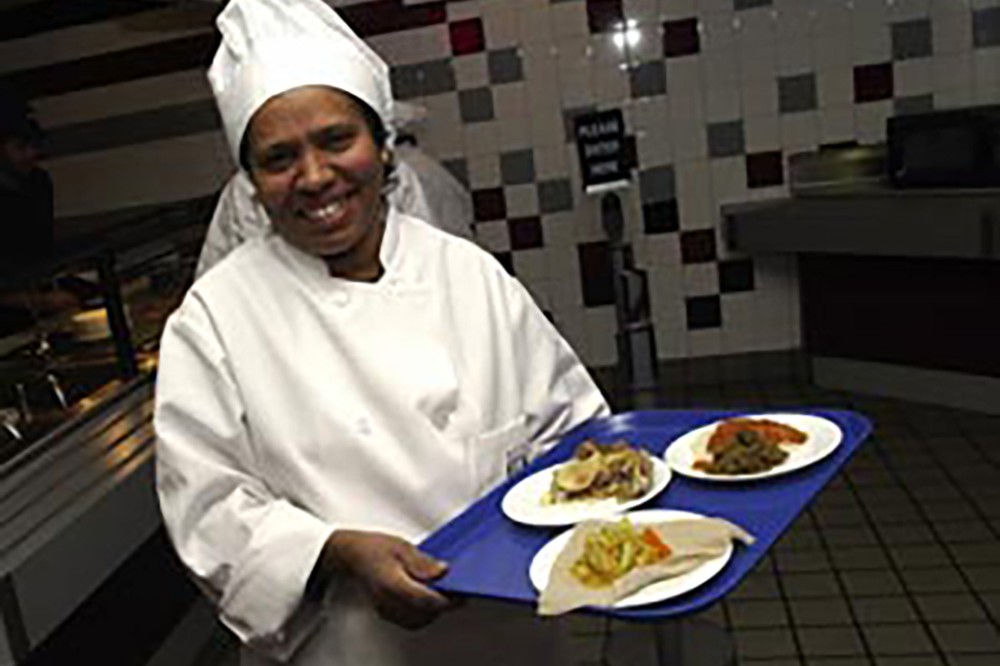 1
Nigisti Hailemariam in Facilities Management Services prepared a savory African vegetarian dish for the Finance and Administration lunch, Celebrating our Diversity, on March 3. It included a mixture of cabbage, potatoes, carrots, peppers, beans and tomatoes. Hailemariam is originally from Eritria, Africa.
1
Nigisti Hailemariam in Facilities Management Services prepared a savory African vegetarian dish for the Finance and Administration lunch, Celebrating our Diversity, on March 3. It included a mixture of cabbage, potatoes, carrots, peppers, beans and tomatoes. Hailemariam is originally from Eritria, Africa. -
March 8, 2005
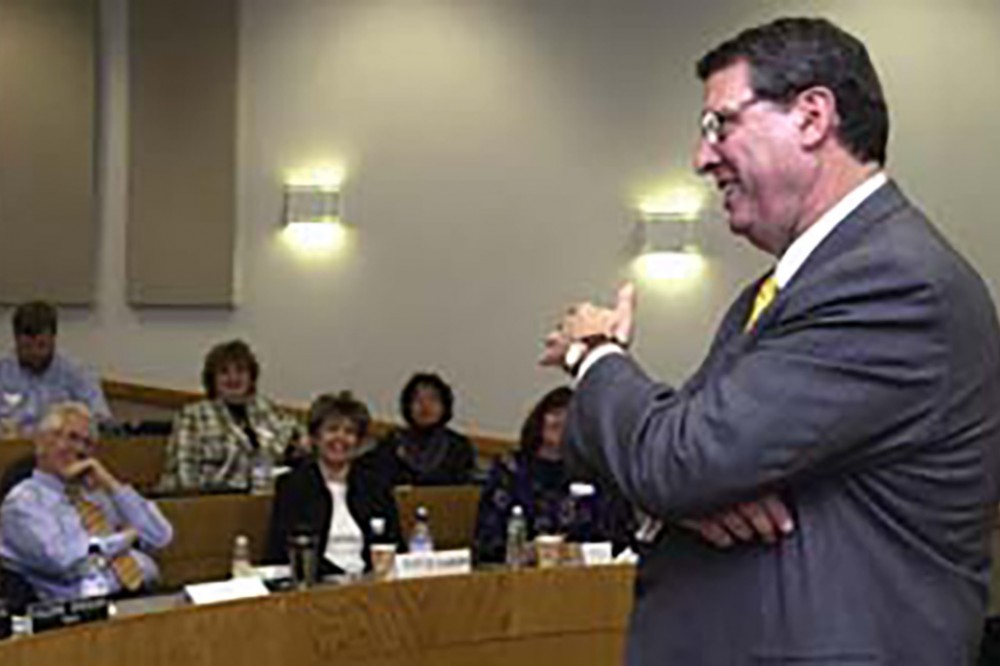 1
Eastman Kodak CEO Daniel Carp shares his insights on "leading change" during a forum in RIT's College of Business. Carp addressed more than 50 alumni of RIT's Executive MBA program. While acknowledging that changes can be very difficult, he encouraged his audience to embrace the opportunities. "Change is good," he said. "It's healthy, and it promotes creativity and success." Carp is a 1973 graduate of RIT's MBA program.
1
Eastman Kodak CEO Daniel Carp shares his insights on "leading change" during a forum in RIT's College of Business. Carp addressed more than 50 alumni of RIT's Executive MBA program. While acknowledging that changes can be very difficult, he encouraged his audience to embrace the opportunities. "Change is good," he said. "It's healthy, and it promotes creativity and success." Carp is a 1973 graduate of RIT's MBA program. -
March 6, 2005
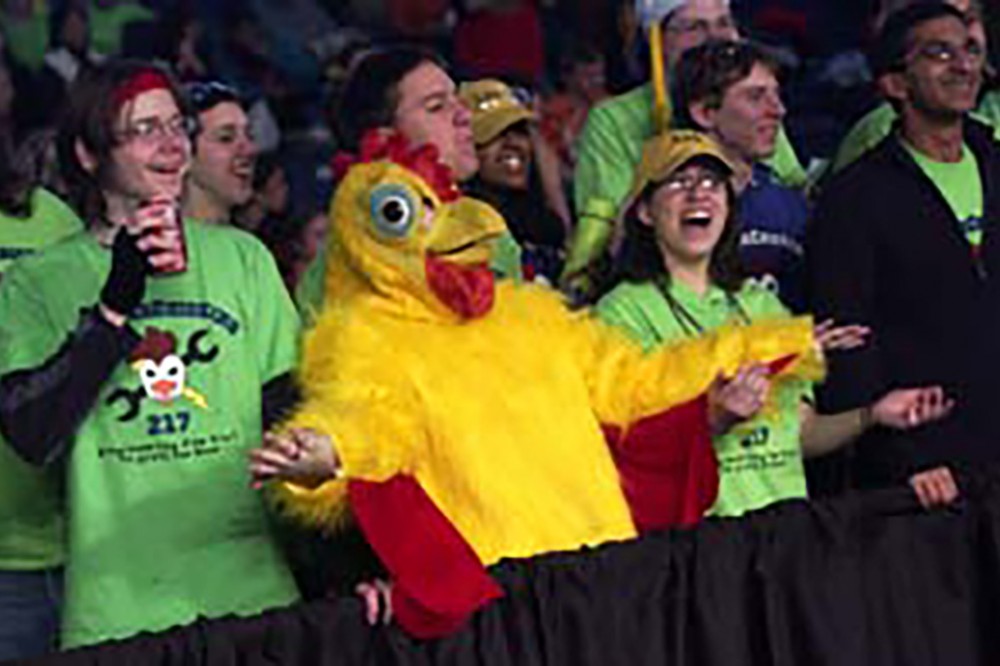 1
A sea of color (and some feathers too) filled the stands during the Finger Lakes Regional FIRST Robotics Competition. Fans supporting 33 high school teams from across the Northeast packed RIT's Gordon Field House and Activities Center March 4-5. It provided a festive atmosphere for the event's inaugural year at RIT. Winners will go on to compete in the national competition next month in Atlanta.
1
A sea of color (and some feathers too) filled the stands during the Finger Lakes Regional FIRST Robotics Competition. Fans supporting 33 high school teams from across the Northeast packed RIT's Gordon Field House and Activities Center March 4-5. It provided a festive atmosphere for the event's inaugural year at RIT. Winners will go on to compete in the national competition next month in Atlanta. -
March 5, 2005
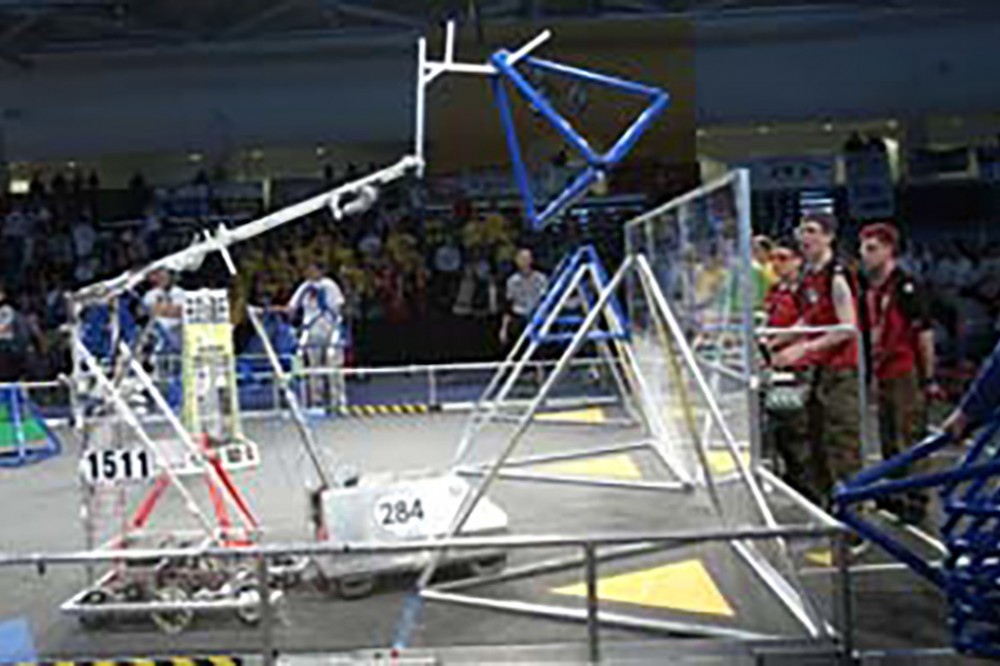 1
Students maneuver their remote-controlled robots into scoring position at the FIRST Robotics Competition. Teams featuring three robots looked to "claim ownership" of more goals than the opposition to score victory in the opening round of competition on March 4. Participants from 33 high schools across the Northeast and their fans helped to pack RIT's Gordon Field House and Activities Center. It 's the inaugural year of the Finger Lakes regional event at RIT.
1
Students maneuver their remote-controlled robots into scoring position at the FIRST Robotics Competition. Teams featuring three robots looked to "claim ownership" of more goals than the opposition to score victory in the opening round of competition on March 4. Participants from 33 high schools across the Northeast and their fans helped to pack RIT's Gordon Field House and Activities Center. It 's the inaugural year of the Finger Lakes regional event at RIT. -
March 4, 2005
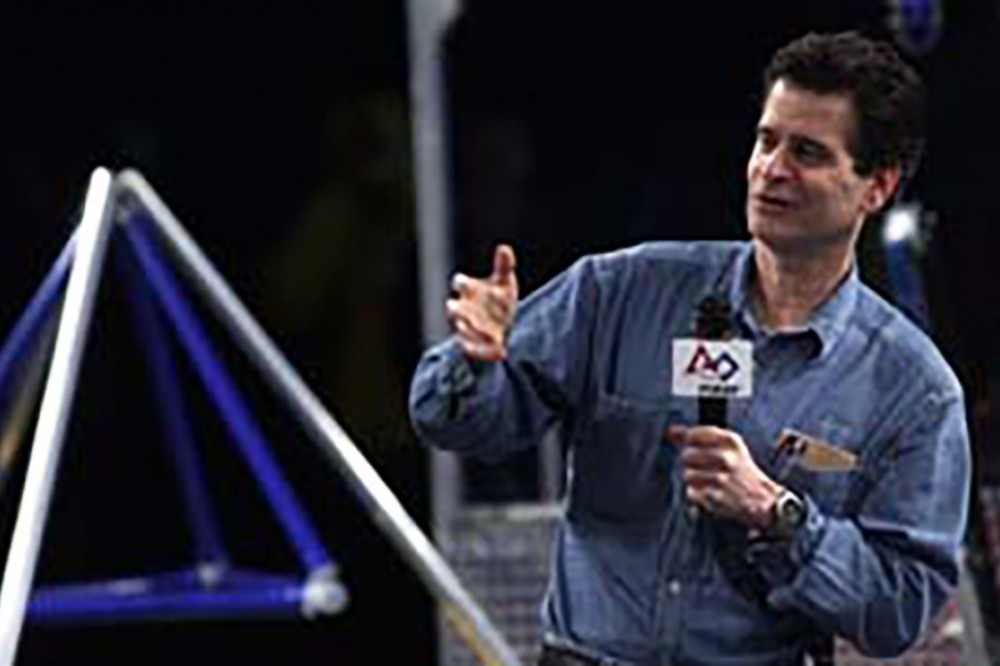 1
Renowed inventor Dean Kamen welcomed participants to the Finger Lakes Regional FIRST Robotics Competition on March 4. Thirty-three teams of high school students from across the Northeast converged at RIT's Gordon Field House and Activities Center for this inaugural event. Over two days, teams take part in a sports-style competition featuring remote-controlled robots designed, built and programmed by students and their mentors. Kamen founded FIRST in 1989.
1
Renowed inventor Dean Kamen welcomed participants to the Finger Lakes Regional FIRST Robotics Competition on March 4. Thirty-three teams of high school students from across the Northeast converged at RIT's Gordon Field House and Activities Center for this inaugural event. Over two days, teams take part in a sports-style competition featuring remote-controlled robots designed, built and programmed by students and their mentors. Kamen founded FIRST in 1989. -
March 3, 2005
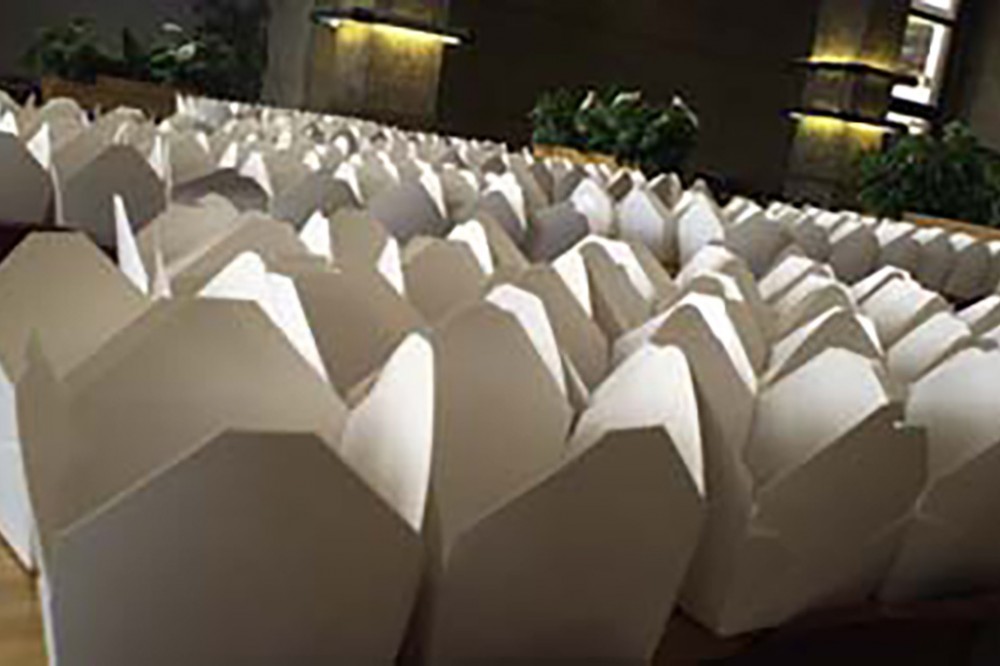 1
RIT food service workers are thinking "inside the box" in preparation for the FIRST Robotics Competition. They'll be serving box lunches to more than 1,000 participants taking part in the Thursday, March 3, practice rounds. The actual competition is March 4-5 inside the Gordon Field House and Activities Center. Thirty-three high school teams from across the Northeast will face off in a sports-style contest featuring remote-controlled robots.
1
RIT food service workers are thinking "inside the box" in preparation for the FIRST Robotics Competition. They'll be serving box lunches to more than 1,000 participants taking part in the Thursday, March 3, practice rounds. The actual competition is March 4-5 inside the Gordon Field House and Activities Center. Thirty-three high school teams from across the Northeast will face off in a sports-style contest featuring remote-controlled robots. -
March 1, 2005
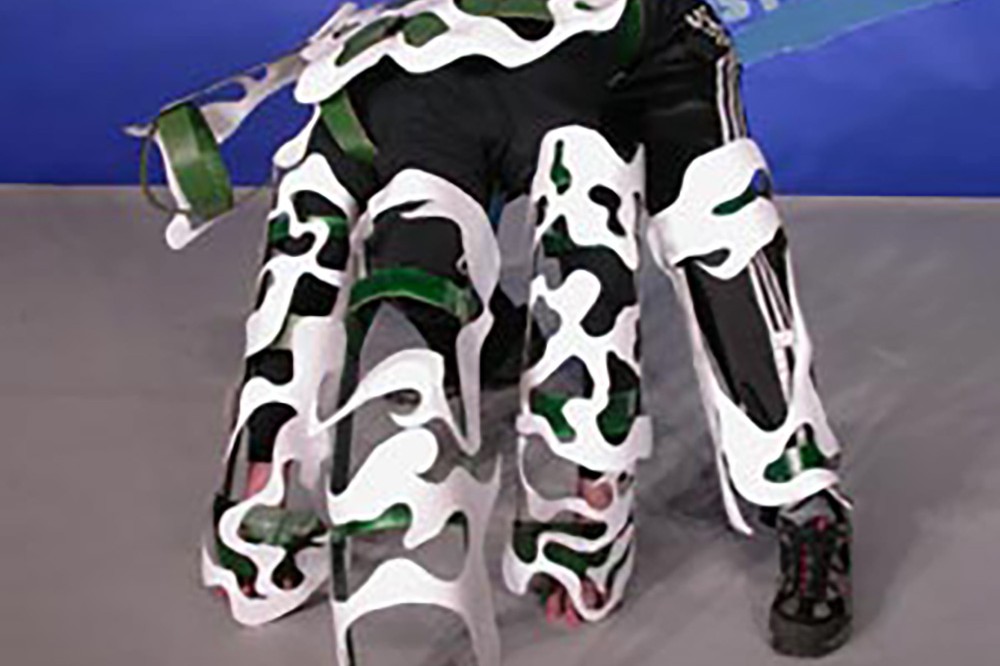 1
You've got to hand it to the talents of RIT's 3-D design students. Al Palmer, a first-year student, used his own body and planar material to create the five digits of a human hand for a class project. He grabbed the audience's attention with his design when he modeled it at the 3-D Extravaganza, Feb. 17. Thing, the crawling hand from the eccentric television show, The Addams Family, was Palmer's inspiration.
1
You've got to hand it to the talents of RIT's 3-D design students. Al Palmer, a first-year student, used his own body and planar material to create the five digits of a human hand for a class project. He grabbed the audience's attention with his design when he modeled it at the 3-D Extravaganza, Feb. 17. Thing, the crawling hand from the eccentric television show, The Addams Family, was Palmer's inspiration. -
February 28, 2005
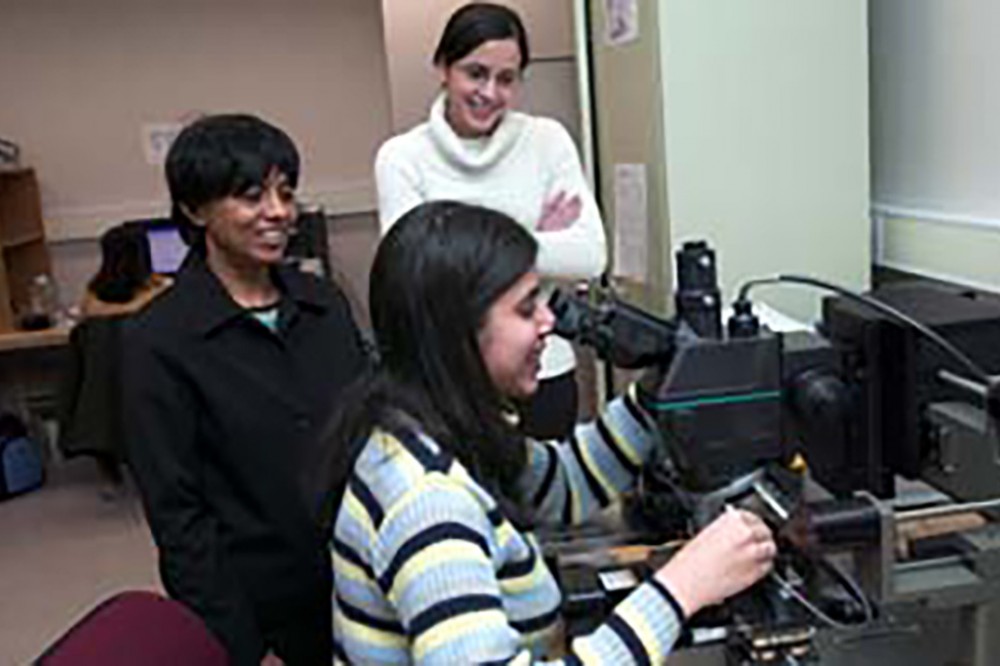 1
Jayanti Venkataraman, professor of electrical engineering, left, and microsystems engineering Ph.D. students Raunakjeet Mann, foreground, and Marie Yvanoff are part of an RIT research team developing a new method for biomedical diagnostics. Their technique provides information necessary for accurate differentiation between healthy and diseased tissue--which may suggest medical prognosis and treatment.
1
Jayanti Venkataraman, professor of electrical engineering, left, and microsystems engineering Ph.D. students Raunakjeet Mann, foreground, and Marie Yvanoff are part of an RIT research team developing a new method for biomedical diagnostics. Their technique provides information necessary for accurate differentiation between healthy and diseased tissue--which may suggest medical prognosis and treatment. -
February 25, 2005
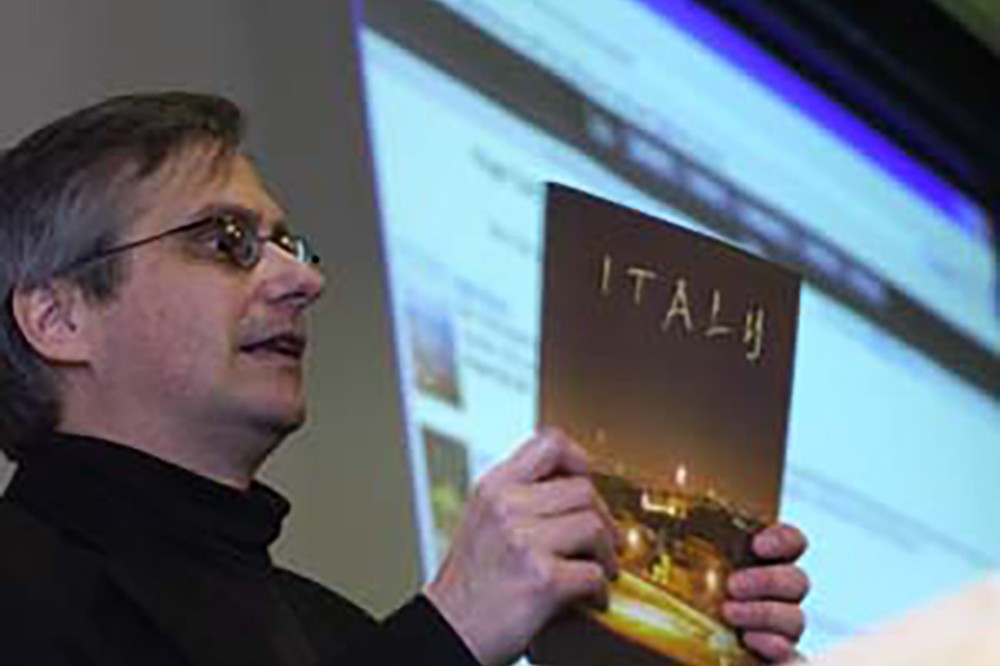 1
Frank Cost explains the advantages of on-demand printing in a digital world during a presentation to RIT researchers. Cost, associate dean of RIT's College of Imaging Arts and Sciences, says digital technology makes the art of printing more viable than ever before. He summarized observations made in his book The New Medium of Print, to be published later this year. The presentation was part of a reception honoring RIT's principal investigators hosted by Sponsored Research Services.
1
Frank Cost explains the advantages of on-demand printing in a digital world during a presentation to RIT researchers. Cost, associate dean of RIT's College of Imaging Arts and Sciences, says digital technology makes the art of printing more viable than ever before. He summarized observations made in his book The New Medium of Print, to be published later this year. The presentation was part of a reception honoring RIT's principal investigators hosted by Sponsored Research Services. -
February 24, 2005
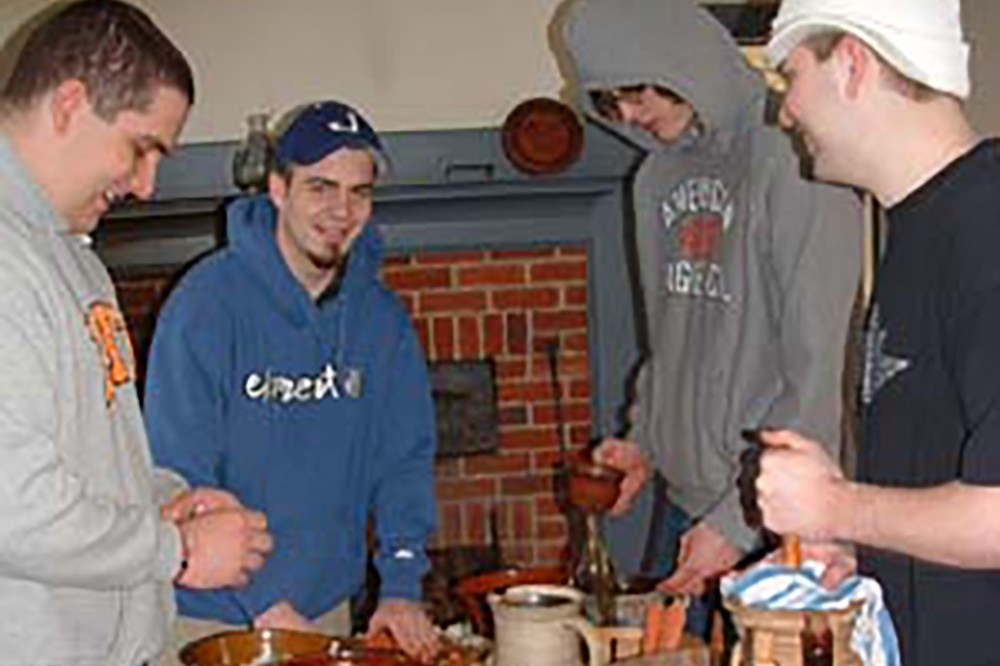 1
RIT information technology students got "cooking" as part of a trip to the Genesee Country Village & Museum. During their visit, the members of the university's IT networking learning community made a 19th century-style dinner--whipping up a hearty soup over an open hearth fire, churning their own butter by hand and making bread from scratch. The museum project allowed them to engage issues examined in their courses while strengthening their ties with each other as part of a learning community.
1
RIT information technology students got "cooking" as part of a trip to the Genesee Country Village & Museum. During their visit, the members of the university's IT networking learning community made a 19th century-style dinner--whipping up a hearty soup over an open hearth fire, churning their own butter by hand and making bread from scratch. The museum project allowed them to engage issues examined in their courses while strengthening their ties with each other as part of a learning community. -
February 23, 2005
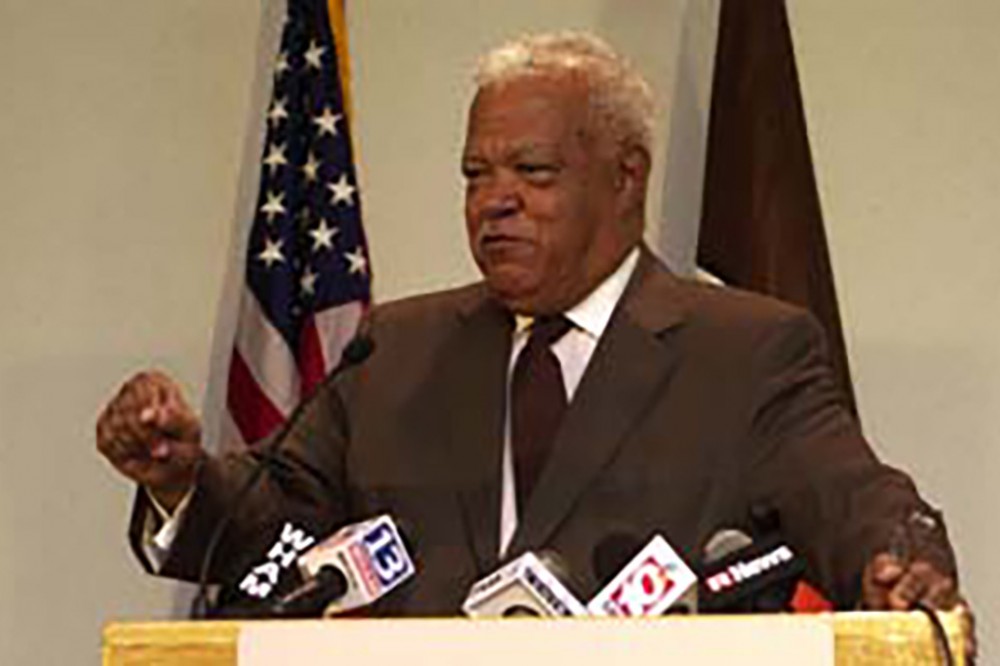 1
Rochester Mayor Bill Johnson announced that he has accepted an appointment to the RIT faculty during a press conference on Feb. 22. Johnson becomes distinguished professor of public policy in the College of Liberal Arts, effective Jan. 1, 2006. He completes his third and final term as Rochester mayor at the end of this year. RIT President Albert Simone calls Johnson "a civic leader with national stature in areas relating to urban issues, regionalism and education."
1
Rochester Mayor Bill Johnson announced that he has accepted an appointment to the RIT faculty during a press conference on Feb. 22. Johnson becomes distinguished professor of public policy in the College of Liberal Arts, effective Jan. 1, 2006. He completes his third and final term as Rochester mayor at the end of this year. RIT President Albert Simone calls Johnson "a civic leader with national stature in areas relating to urban issues, regionalism and education." -
February 20, 2005
 1
Provost Stanley McKenzie presents Robert Frisina, College of Science distringuished researcher, with the RIT Batting 1000 Award. Frisina is among 10 principal investigators to be recognized for earning a research grant in 2004 with their first-ever proposal at RIT. The presentations were made during a reception saluting all of the university's principal investigators. More than 1,000 proposals were written at RIT last year, resulting in more than $30 million in grants.
1
Provost Stanley McKenzie presents Robert Frisina, College of Science distringuished researcher, with the RIT Batting 1000 Award. Frisina is among 10 principal investigators to be recognized for earning a research grant in 2004 with their first-ever proposal at RIT. The presentations were made during a reception saluting all of the university's principal investigators. More than 1,000 proposals were written at RIT last year, resulting in more than $30 million in grants.









